Volume 81, Issue 3
Displaying 1-11 of 11 articles from this issue
- |<
- <
- 1
- >
- >|
Rapid Communications
-
2005Volume 81Issue 3 Pages 141-142
Published: 2005
Released on J-STAGE: July 29, 2005
Download PDF (63K)
Commentary
-
2005Volume 81Issue 3 Pages 143-148
Published: 2005
Released on J-STAGE: July 29, 2005
Download PDF (749K)
Special Topic Article : Progress of Plasma Control by Use of Radio-Frequencies
-
2005Volume 81Issue 3 Pages 149-159
Published: 2005
Released on J-STAGE: July 29, 2005
Download PDF (647K) -
2005Volume 81Issue 3 Pages 160-166
Published: 2005
Released on J-STAGE: July 29, 2005
Download PDF (549K) -
2005Volume 81Issue 3 Pages 167-170
Published: 2005
Released on J-STAGE: July 29, 2005
Download PDF (400K) -
2005Volume 81Issue 3 Pages 171-177
Published: 2005
Released on J-STAGE: July 29, 2005
Download PDF (575K) -
2005Volume 81Issue 3 Pages 178-182
Published: 2005
Released on J-STAGE: July 29, 2005
Download PDF (491K)
Contributed Paper
-
2005Volume 81Issue 3 Pages 186-190
Published: 2005
Released on J-STAGE: July 29, 2005
Download PDF (309K) -
2005Volume 81Issue 3 Pages 191-196
Published: 2005
Released on J-STAGE: July 29, 2005
Download PDF (596K)
Lecture Note : Introduction to Data Acquision
-
2005Volume 81Issue 3 Pages 197-203
Published: 2005
Released on J-STAGE: July 29, 2005
Download PDF (482K)
Contributed Paper
-
2005Volume 81Issue 3 Pages 204-211
Published: 2005
Released on J-STAGE: July 29, 2005
Download PDF (322K)
- |<
- <
- 1
- >
- >|
